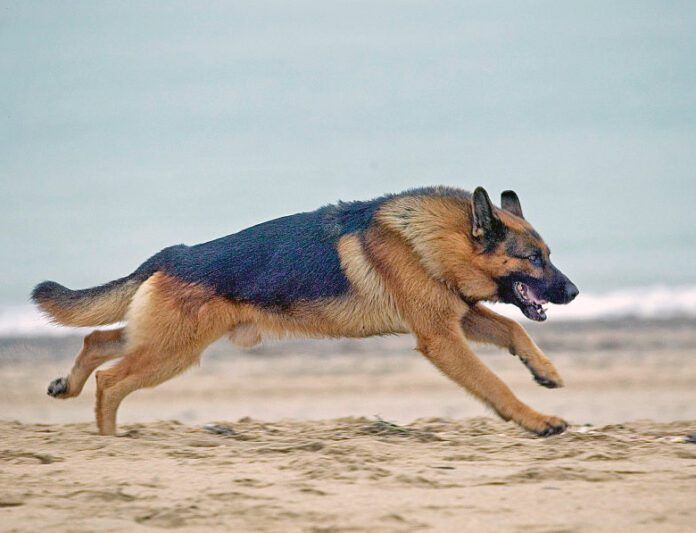Degenerative myelopathy (DM) is a progressive neurologic disorder in dogs that strongly resembles amyotrophic neurodegenerative disease (ALS), or Lou Gehrig’s disease, in people. Unfortunately, there is no effective treatment or cure for this devastating disorder, but physical therapy (PT) is scientifically proven to make a difference in the quality of life and longevity for dogs with DM.
Symptoms
Symptoms of DM usually become apparent when the dog is 8 or 9 years old and start with weakness and incoordination in the hind legs (see sidebar). Dogs typically progress through the stages of DM over the next one or two years, with the final stages affecting all four limbs and the diaphragm, which makes it difficult to breathe. DM typically ends in euthanasia.
Physical Therapy
PT slows the clinical progression of DM and keeps dogs ambulatory much longer than dogs that don’t get PT.
Intense physical therapy for DM includes professional sessions (once or twice a week) combined with daily recommended exercises at home. At PT appointments, in addition to massage and core-strengthening exercises, your dog with receive laser treatments and underwater treadmill therapy.
Diagnosis
The disease is caused by a mutation in the SOD-1 gene, which is responsible for protecting neural tissue from damage by cell-damaging free radicals. Free radicals are created by oxidative stress in the body. There is no definitive test for DM that can be done while the dog is alive.
The German Shepherd Dog is the poster child for this disease, but it happens in other breeds as well, including mixed breed dogs. Breeds most commonly affected include:
- Bernese Mountain Dog
- Boxer
- Chesapeake Bay Retriever
- Corgi
- German Shepherd Dog
- Rhodesian Ridgeback
DNA testing for dogs is available, so peace of mind is possible if your puppy comes from negative parents. If you have your dog tested, bear in mind that having the mutation does not necessarily mean the dog is doomed to suffer from DM. It only means he is at risk for the disease.
The DNA test also can help solidify a diagnosis of DM in a clinically affected dog. A clinical diagnosis of DM is one of exclusion, which means all other things that could cause similar symptoms must be ruled out before calling it DM. These include:
- Bilateral cranial circulate ligament (CCL) rupture
- Bilateral hip arthritis
- Lumbosacral stenosis (LSS)
- Intervertebral disc disease (IVDD)
- Tumors or other disease of the spinal cord
Orthopedic x-rays, MRI, and spinal tap to assess cerebrospinal fluid are useful diagnostic tests, but if your dog fits the mold based on symptoms, breed, age, and a positive DNA test that might be enough to call it DM. A trial course of pain management/anti-inflammatory medication might be suggested to assess response to treatment. Orthopedic disease might respond favorably, DM would be unaffected.
Early stage
- Hindlimb weakness
- Hindlimb incoordination/mild swaying
- Difficulty rising
- Scuffing hind feet/worn toenails
Mid-stage
- Extreme hindlimb weakness
- Frequent slipping, sliding, falling on hindlimbs
- Inability to stand for long
- Knuckling of hind paws when walking and/or standing
- Extreme incoordination/crossing of hind limbs/swaggering/swaying
Late stage
- Complete paralysis of hind limbs (a cart can be used for continued mobility)
- Urinary incontinence or inability to urinate (requires manual emptying of bladder)
- Fecal incontinence
End stage
- Forelimb paralysis (fully recumbent, can no longer stand, walk, or use a cart)
- Paralysis of diaphragm (difficulty breathing)






